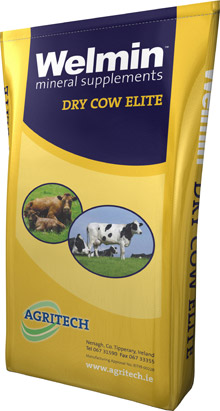For spring calving herds, the end of the lactation is now in sight and there are important decisions to be made over the next few weeks that will dictate how stress-free calving 2024 may be. This month, we’ll highlight a few important boxes to be added to the ‘to-do’ checklist prior to drying off.
Milk recording
As a rule of thumb, four milk recordings a year should be carried out to allow you to make well-informed decisions throughout the year. At this point, the final milk recording should be organised close to the onset of drying off, to help review dry cow plans regarding selective dry cow therapy (ideally within 30 days of drying off). In the current climate, milk recording will play a vital role in identifying our most profitable cows.
 The final milk recording should be organised close to the onset of drying off, to help review dry cow plans regarding selective dry cow therapy.
The final milk recording should be organised close to the onset of drying off, to help review dry cow plans regarding selective dry cow therapy.
Body Condition Score
It is always best practice to dry off cows at, or very close to same condition that she should calve down in (target 3.0-3.25). Therefore, the nutrition of the dry cow should just maintain condition over the 60-day dry period (thin cows should be dried off early to allow for recouperation of condition). Where large variation in the herd arises with BCS, a tailored plan is advisable.
Silage analysis
Nutrition for the dry cow will centre around what quality silage is available (silage analysis on forage available over the dry period is crucial!). High quality silage will need dilution with straw to avoid over-conditioning or where quality is very poor, some level of supplementation will be required.
Where issues have occurred on farm regarding milk fever, retained afterbirth, and/or slow calvings, a silage mineral analysis is advisable to establish K% in the dry cow silage being offered. Preventative plans can then be put in place to avoid such issues reoccurring.

Selecting a dry cow mineral
Feeding a high-quality dry cow mineral for 60 days is central to allowing the cow to calve down without issue. Most Irish silages lack the required mineral levels to get the cow through the dry period. A high inclusion of a highly soluble sources of Magnesium will be essential to overcome milk fever risks, which in any good mineral, will be coupled with a high inclusion of chelated/protected trace elements to overcome antagonist issues, and a strong all-round vitamin pack (A, D3 & E). 
Learn more about our Dry Cow Mineral Range here.
For more information, contact your local Agritech Sales Advisor.


